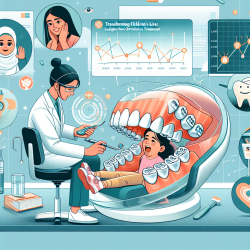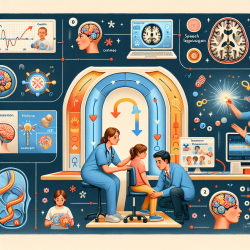At TinyEYE, we are committed to leveraging data-driven decisions to enhance children's lives through our online therapy services. A recent study titled Reflection on patients’ experience with orthodontic appliances wear and its impact on oral health related quality of life: observational comparative study provides valuable insights that can help practitioners improve their skills and encourage further research in orthodontic treatment.
This study, conducted by Maram A. Abutaleb and colleagues, examined the experiences of 81 participants aged 10 to 16 with Class II Division 1 malocclusion. The participants were divided into three groups: those treated with a Twin-Block functional appliance, those treated with a fixed orthodontic appliance, and a control group not yet in orthodontic treatment. The study used the Child Oral Health Impact Profile Short Form-19 (COHIP SF-19) to assess oral health-related quality of life (OHRQoL).
The findings revealed significant differences in OHRQoL between the groups at baseline and after two months. Key insights include:
- Socio-Emotional Well-Being: At baseline, the fixed appliance group reported better socio-emotional well-being compared to the Twin-Block and malocclusion groups. However, after two months, the scores were similar between the fixed and Twin-Block groups, indicating that patients' perceptions of their orthodontic appliances might change over time.
- Functional Well-Being: Just after finishing treatment, all groups reported similar functional well-being. After two months, the Twin-Block group showed the best functional well-being, followed by the fixed appliance group and the malocclusion group.
- Overall OHRQoL: The malocclusion group consistently reported the poorest total OHRQoL both at baseline and after two months, highlighting the significant impact of untreated malocclusion on children's quality of life.
For practitioners, these findings underscore the importance of considering both the immediate and long-term perceptions of patients undergoing orthodontic treatment. By understanding the evolving experiences of children with different types of orthodontic appliances, practitioners can tailor their approaches to improve patient outcomes.
Furthermore, this study highlights the need for ongoing research to explore the nuanced impacts of various orthodontic treatments on children's quality of life. Practitioners are encouraged to stay informed about the latest research and to consider participating in studies that can contribute to the growing body of knowledge in this field.
To read the original research paper, please follow this link: Reflection on patients’ experience with orthodontic appliances wear and its impact on oral health related quality of life: observational comparative study.










